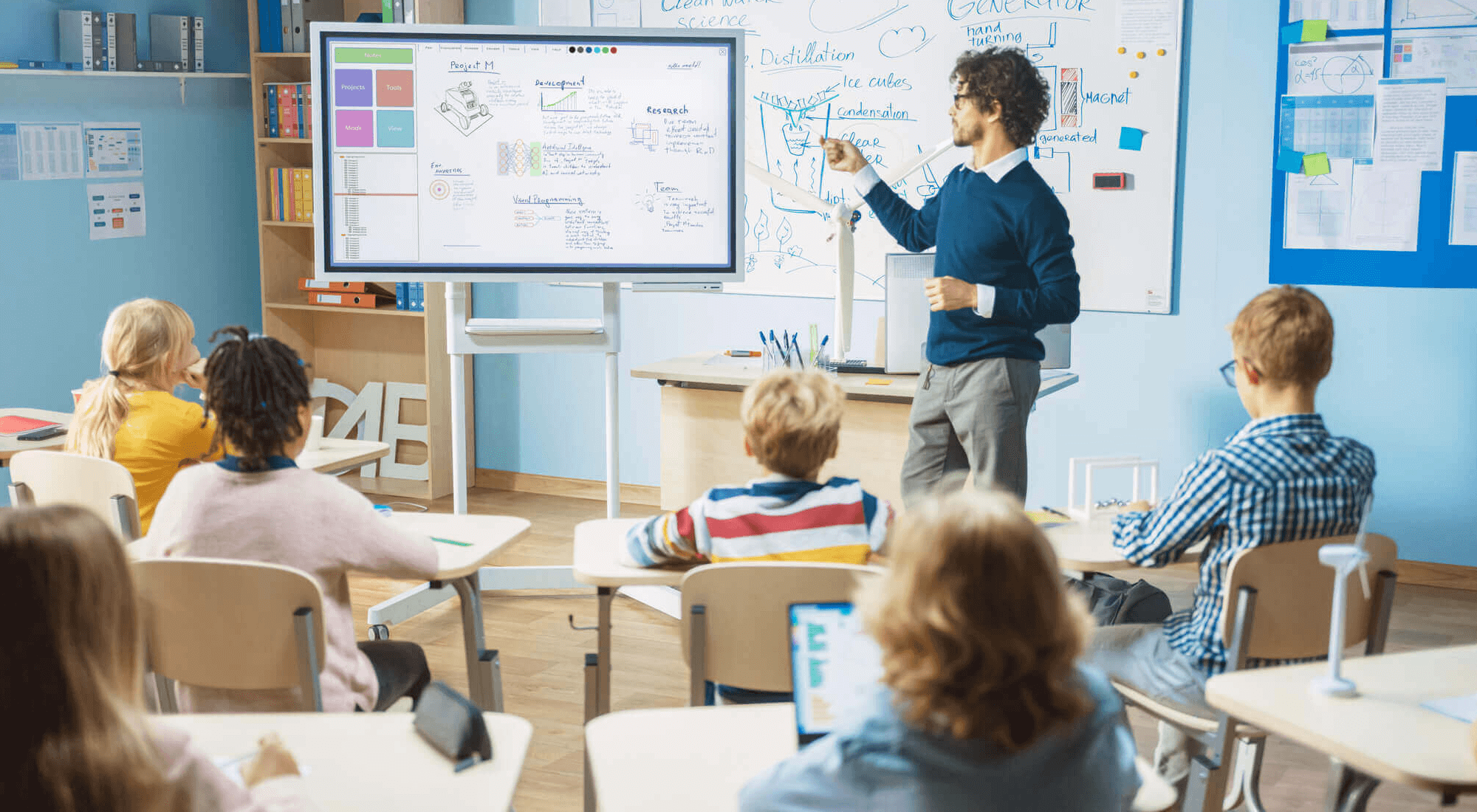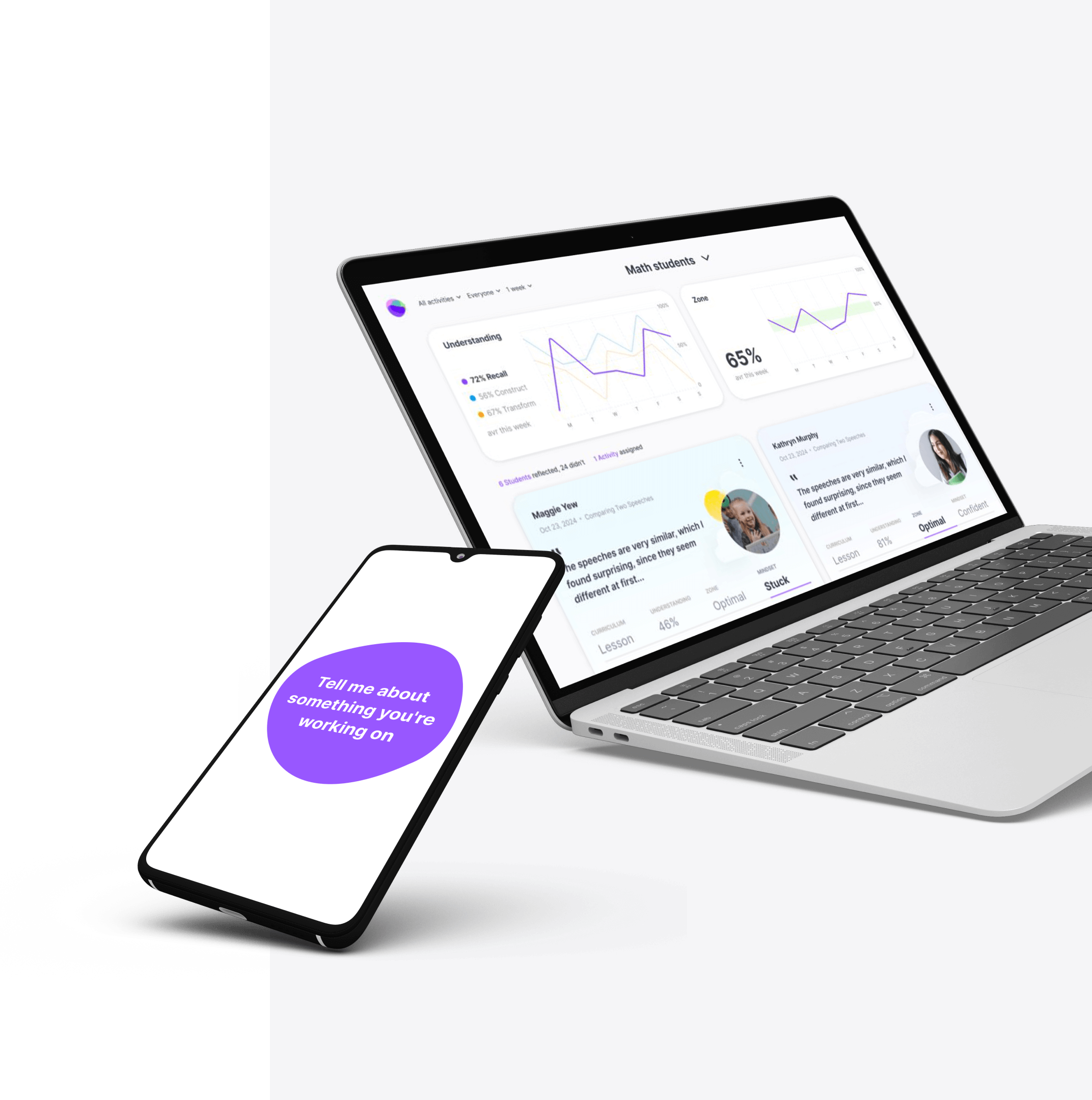
Interactive whiteboards (IWBs) were once touted as game-changers for education. Schools poured millions into them, expecting these flashy tools to create more engaging classrooms and boost student outcomes.
Fast forward to today, and the results have fallen short. Instead of revolutionizing learning, IWBs often reinforce outdated teaching methods, adding little real value to the educational experience.
Here are five key reasons why IWBs haven’t lived up to their promise—and why schools must rethink their tech investments if they’re serious about improving student outcomes.
1. Reinforcing teacher-centered instruction
Interactive whiteboards are supposed to be, well, interactive, right?
But in practice, they often reinforce a teacher-centered model. Teachers stand at the front, controlling the content while students passively watch—a “sage on the stage” approach that clashes with the modern, student-centered learning many schools and districts are looking to incorporate, which thrives on active participation and engagement.
Too often, IWBs end up as glorified projection screens, delivering digital lectures rather than fostering true interaction.
2. Limited student engagement
Interactive whiteboards (IWBs) claim to enhance student engagement, but the reality often falls short. Only one or two students can interact at a time, leaving the rest of the class disengaged. While allowing students to teach from the board can promote active learning, time constraints make it impossible for everyone to participate.
As a result, IWBs often become another tool for passive instruction, rather than fostering the active engagement they promise.
3. Lack of teacher training and integration
Here’s the reality: most teachers aren’t adequately trained to use interactive whiteboards (IWBs) effectively. This includes both seasoned educators and recent graduates.
A survey of 214 early-career teachers revealed that 56% lack confidence in using educational technology when they enter the classroom.
Without solid professional development, teachers tend to rely on traditional methods, limiting the potential of IWBs. As a result, IWBs often end up underused or relegated to basic tasks.
No matter how innovative the technology, without proper training, its impact is severely diminished.
4. Financial burden with little return on investment
Let’s be real: IWBs are expensive. The initial investment, installation, upkeep, and eventual upgrades place a heavy burden on school budgets.
School districts spend significant amounts of money on these devices, yet the return on investment is often negligible.
Many schools have seen little to no improvement in student outcomes after implementing IWBs.
This money could be better spent on initiatives that directly impact learning, such as teacher training, personalized learning tools, or curriculum development.
5. Too difficult to measure the impact
IWBs may look impressive, but their educational value is hard to quantify. These boards don’t record any data from students, making it impossible to measure their impact on student learning and verify the lofty claims of the companies behind them.
Schools are left to trust that their multi-thousand-dollar investment is doing “something” beneficial, without any concrete proof.
In an era where data-driven decision-making is key, investing in IWBs feels like a relic of the past. If tracking ROI and educational outcomes is important, IWBs may not be the right tool to back.
MirrorTalk
Track student progress in real-time.
MirrorTalk captures and analyzes guided spoken reflections, giving schools concrete data to measure student understanding and growth. Don’t just hope for progress—see it!
Learn about our pilot program and try MirrorTalk in your school.

IWBs: a missed opportunity
Interactive whiteboards were supposed to revolutionize classrooms, but they’ve largely failed to live up to their promise.
Instead of fostering better learning experiences, IWBs often reinforce limited teaching methods, discourage student engagement, and impose a significant financial burden on schools without delivering a meaningful return.
If schools are serious about improving student outcomes, they need to rethink their approach to educational technology. Rather than continuing to invest in IWBs, schools should prioritize tools that align with modern, student-centered teaching practices and data-driven decision making.
This means integrating technology that truly enhances learning and providing teachers with the professional development they need to implement these tools effectively.
Only then can technology make a meaningful impact in the classroom.
Looking for a better investment than interactive boards?
M2 by Swivl is the next generation of classroom technology—more social, project-driven, and perfectly balanced between whole-class displays and personal devices that often fall short.
Why choose M2?
- Supports Modern Pedagogy: Tailored for student-centered teaching.
- Boosts Engagement: Encourages active thinking, collaboration, and participation.
- Teacher-Friendly: Easy to integrate into essential lesson components like small group instruction and formative assessments.
- Actionable Insights: Tracks student growth over time, providing districts with a clear picture of learning progress and ROI.
Learn about our pilot program and bring M2 to your school.